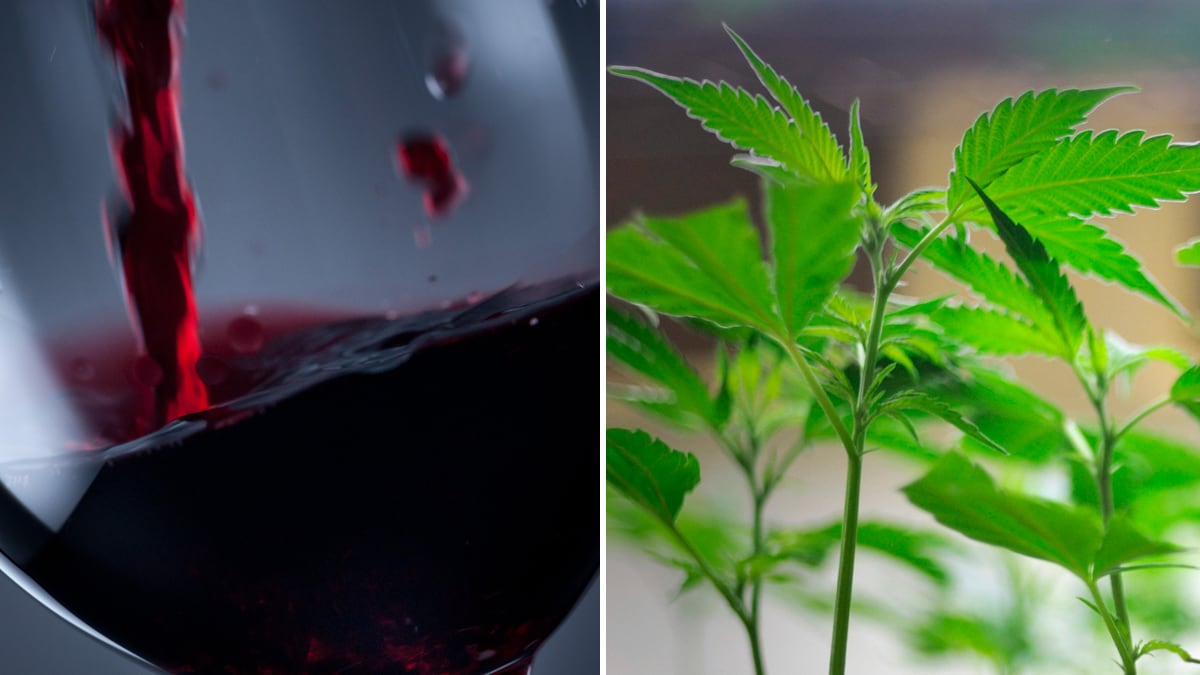Last year, at a Burgundy dinner in New York, I was given a wine that smelled like no Burgundy I’d ever encountered. Instead, it had a pungent herbal aroma that called to mind a college dormitory on a Saturday night—that, or a Grateful Dead concert. The devilish grin on the face of the friend who offered me the mystery liquid confirmed it: what I had in my hand was a glass of pot wine—yes, as in marijuana-laced.
In the spirit of inquiry, I took a sip, and while it neither got me stoned nor made me want to ditch the glass of 1985 Roumier Bonnes-Mares that I was holding in my other hand, it was certainly a novel experience. But it turns out that pot wine isn’t such a novelty in California wine country; there apparently are quite a few winemakers surreptitiously producing cannabis cuvées.
Curious to learn more about this weediest of wines, I recently spoke with a California vintner who makes it on the side. For obvious reasons, he didn’t want his real name used, so I will refer to him as “Bud.” He told me pot wine holds an important distinction: in his view, it is “the only truly original style of wine created in the New World.” Bud said he is just one of a number of winemakers on the Central Coast who are blending two of California’s most prized crops. The recipe for pot wine, such as it is, consists of dropping one pound of marijuana into a cask of fermenting wine, which yields about 1.5 grams of pot per bottle; the better the raw materials—grapes and dope—the better the wine.
ADVERTISEMENT
The fermentation process converts the sugar in grapes into alcohol, and alcohol extracts the THC from marijuana. Bud goes for maximum extraction: he keeps his weed wine in barrel for nine months before bottling it. He said he and other winemakers produce pot wine in small quantities, to be shared in “convivial moments with like-minded people.” Those who enjoy it evidently enjoy it a lot: Bud said that at certain wine events in San Francisco, New York, and Las Vegas, “I can’t show up unless I have some with me.”
Drugs have been on the periphery of the California wine scene going back a long time. In the late 1960s, Ridge Vineyards, located in the Santa Cruz Mountains above Silicon Valley and one of California’s most storied wineries, was something of a magnet for counterculture types. In his 2001 book, Zin: The History and Mystery of Zinfandel, David Darlington wrote that on “spectacular Monte Bello Ridge, psychoactive drugs proved quite popular; one Ridge acolyte—a full-bearded, red-headed individual named Jerry—reportedly ate LSD 64 days in a row, and bottling was frequently performed by someone who held a 750-ml glass vessel with one hand and a joint of primo sinsemilla with the other.” Having tasted Ridge wines from that period, I can tell you that they have aged beautifully and that I have never found any decayed roaches in the sediment. I can also tell you that this sort of thing no longer happens at Ridge.

It is unclear when pot wine originated, but Bud told me that it was being produced in California as far back as the early 1980s. At the time, the Reagan administration was ratcheting up the war on drugs, and marijuana wine had a whiff of danger about it. Bud said it typically was made then with rosé wines and that because of the legal risk involved, bottles were selling for more than $100. (Bud recently tasted a bottle from 1985 and found that it had held up amazingly well and was still very aromatic). These days, though, the marijuana is typically blended with robust reds such as cabernet sauvignon and syrah, and because cannabis has largely shed its illicitness in California, there is not much of a paying market now for pot wine; it’s really just a party drink that winemakers break out whenever the mood strikes.
Crane Carter, who is president of the Napa Valley Marijuana Growers, an organization he founded and which two years ago was granted membership in the Napa County Farm Bureau, says pot wine is increasingly fashionable in wine country. He told me that in Napa, much of the marijuana used for wine comes from Humboldt County, which is California’s weed capital, but there’s also plenty of locally grown grass. Carter said cabernet, Napa’s main grape, is the variety of choice for marijuana-seasoned wine, and that fruit from the Stag’s Leap district is thought to pair particularly well with pot. According to Carter, pot wine delivers a quicker high than pot brownies, and the combination of alcohol and marijuana produces “an interesting little buzz.” He believes cannabis wine has a bright future in Napa. “People love wine,” he says, “and they love weed.”






